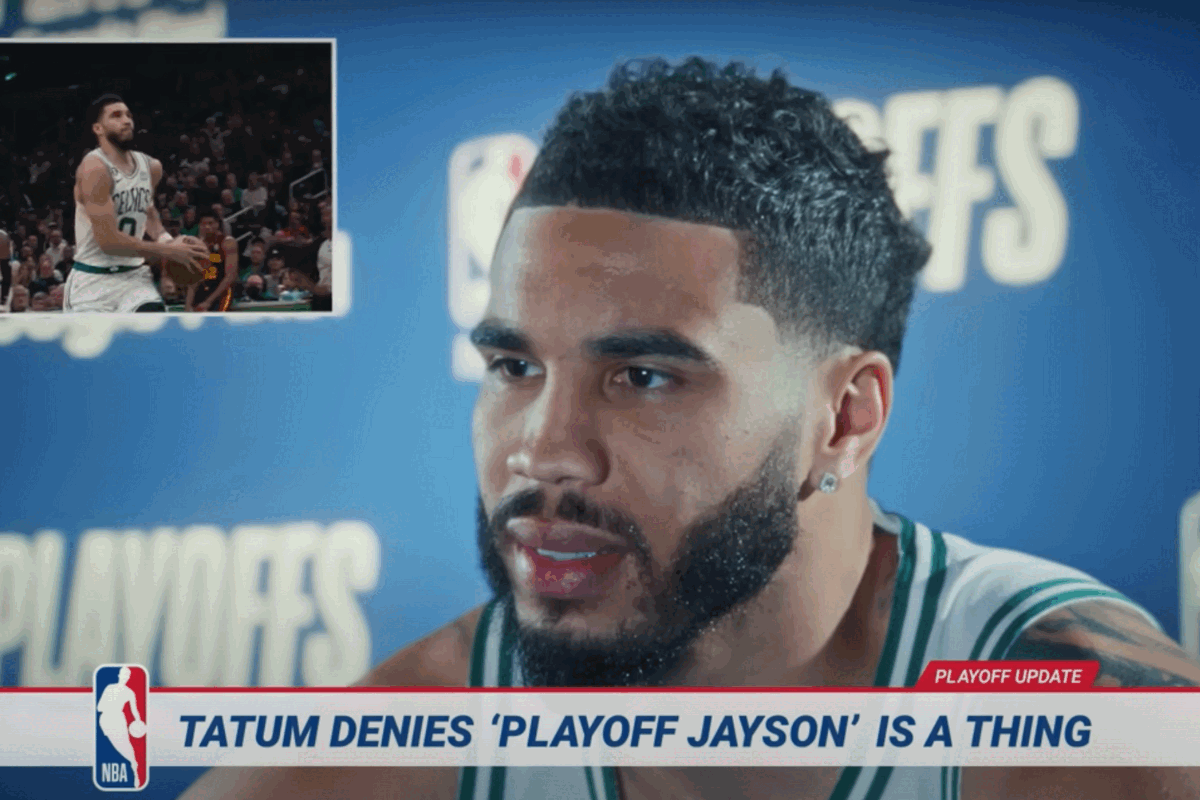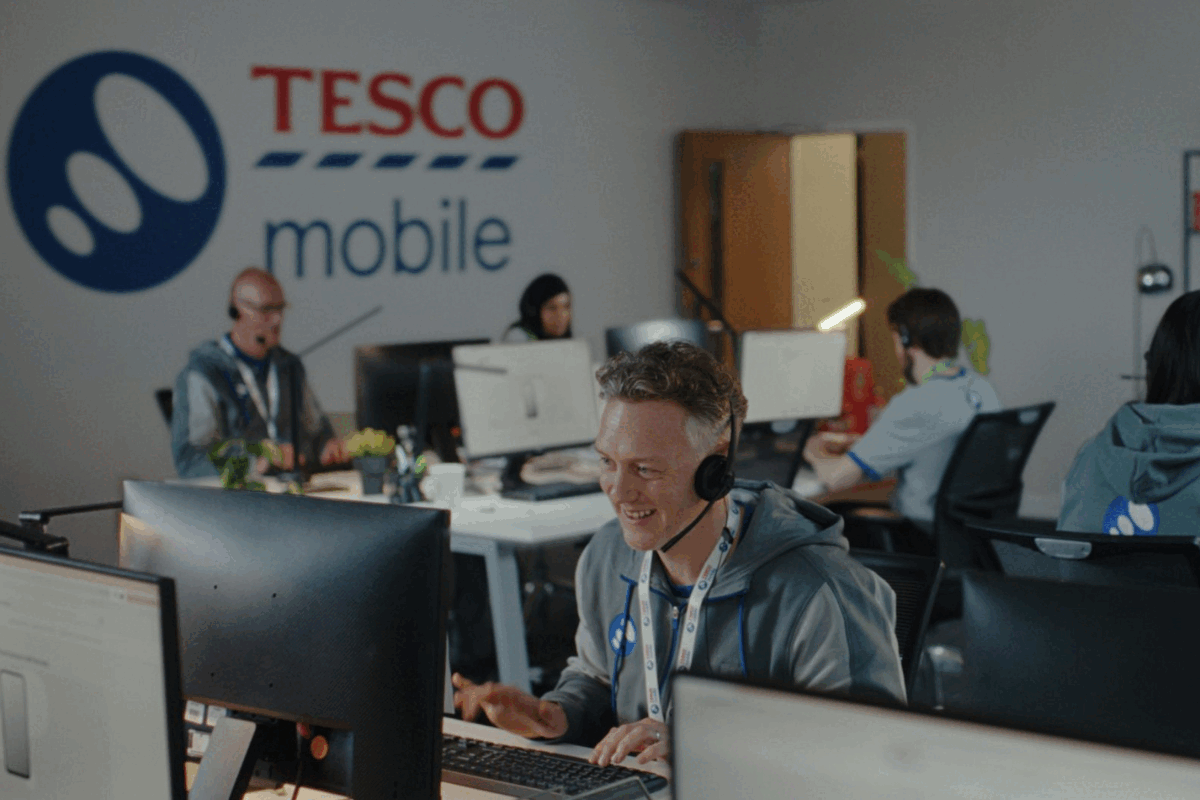The Big Issue: Ad Blocking
- Tuesday, June 30th, 2015
- Share this article:
Each week in July, well be taking one of the four biggest issues in mobile advertising right now – ad blocking, viewability, ad fraud and brand safety – and examining it close up. For everything you ever wanted to know about ad blocking but were too afraid to ask, read on.
 Up until now, ad blocking hasnt been a major problem on mobile. The technology has its roots on desktop, where AdBlock Plus started life as a Firefox browser extension in 2006, and its largely stayed there.
Up until now, ad blocking hasnt been a major problem on mobile. The technology has its roots on desktop, where AdBlock Plus started life as a Firefox browser extension in 2006, and its largely stayed there.
There were 144m monthly active users of ad blockers in Q2 2014, according to a report from Adobe and PageFair – but barely any of those were on mobile. According to an IAB UK report released today, only 19 per cent of Brits ad block users have it set up on their smartphone or tablet.
“At the moment, the vast majority of this behaviour is on desktop,” says Pagefair CEO Sean Blanchfield. “99 per cent of traffic we work with is desktop, because thats where the ad blocking is.”
In the past couple of months, however, weve seen everyone from Apple to MNOs threatening to turn on ad blocking on mobile. So just how concerned should mobile marketers be about ad blocking, and what can they do about it?
“Ad blocking as a problem hasnt hit mobile yet in the same way that it has desktop,” Blanchfield says. “But that is about to change.”
Ad-block-alypse now?
The past couple of months have been packed with stories about mobile ad blocking. First came word that a number of MNOs were working with Shine, the Israeli provider of an solution that operators can install at their data centres to filter out ad content delivered over mobile data connections.
One of the blockers key promises, to consumers and operators alike, is that they stop ads from consuming precious data. Thats naturally attractive to someone trying to make the most of their monthly allowance, but even more to those businesses which make mobile advertising possible through their network infrastructure, without ever seeing any of the proceeds.
The initial headlines made it sound like the end for mobile advertising was nigh. While most ad blockers currently are attached to browsers, meaning they only affect web ads, this would stop any ads – on the web or in-app – at the source. However, its still unclear exactly how many MNOs are on board, and so far there have been no announcements about the deployment of Shines technology. In May, CMO Roi Carthy told us the technology would be deployed in “the next few months” but when we got in touch for this article, he had no updates to share.
Even if these deployments never come to pass, though, theres no shortage of alternatives available to mobile users wanting to get rid of those pesky ads. A number of mobile web browsers enable ad blocking extensions (most notably Firefox, which has seen 14.1 per cent of its users install an ad blocker according to PageFair) or come with it built-in (like Disconnect, an iOS app that in its premium version doubles up as an in-app ad blocker) and there are many more on the horizon.
In June, Adblock Plus – currently the single largest ad block company – launched its own web browser app, initially for Android, with an iOS version due later this summer. The app is still in beta, and so only available by joining a community Google+ group, but it still racked up 380,000 downloads in the first week. “Compared to our 50-60m desktop users, its just a drop in the bucket,” says Ben Williams, Adblock Plus head of operations.
But when it comes to mobile browsers, the biggest potential threat right now comes from an app youve likely never heard of.
“When UC Browser began to light up our dashboards, we didnt really know what was going on,” says PageFairs Blanchfield. Built-in ad blocking was added to UC Browser – popular in emerging markets, to the tune of some 500m users – as part of an update last August.
“We started seeing an ad blocking spike in India and China for the first time,” Blanchfield says. “We now see 70 per cent of traffic from that browser blocking ads – I guess the other 30 per cent havent got the update yet. If their user numbers are accurate, thats an extra 350m ad block users that have come online in the last year, on that browser alone. Thats bigger than our estimate of the total amount ad blocking on desktop combined.”
While web browsers are currently the main method of blocking ads on mobile – meaning that, for now, in-app ad revenues are fairly safe – theyre far from the only technology which could prove a major headache for mobile advertisers in future.
The aforementioned premium version of Disconnect uses a VPN (Virtual Private Network) to block any and all ads, and altering a routers DNS (Domain Name System) settings – either using hardware like the Kickstarter-funded AdTrap, or services like BA.net – filters ads from any device connected via wi-fi. Compared to installing a browser extension, these are both fairly niche solutions requiring a certain level of technical know-how. However, many desktop users are familiar with using both to access region-locked content on the likes of Netflix, and theyre only set to get more user-friendly as time goes on.
The problem for marketers
However users end up blocking ads, this spells big trouble for publishers and advertisers, and some are understandably starting to get ticked off. In France, the GESTE and Internet Advertising Bureau have both reportedly been considering lawsuits against Eyeo, the German company behind Adblock Plus.
Its not hard to see why. Adoption of ad blockers costs companies on both sides of the advertising equation a lot of money – as much as $6.6bn (£4.2bn) annually for Google alone, if a recent PageFair report is to be believed.
On mobile, the big advantage Google has is its control of the Play Store, and thus the vast majority of Android users access to apps. It removed Adblock Plus first app from the store back in early 2013 due to “interference with another service or product”, but Williams remains confident that the companys latest app will be given the green light once it comes out of beta. “That was a full Android-wide ad blocking solution, and this is just a browser,” he says. “You can already download Adblock Plus for Firefox mobile, so it stands to reason that theyd let this one through.”
Googles actions are notably at odds with Androids reputation as a relatively open ecosystem – and its biggest competitor is similarly playing against type when it comes to ad blockers. While iOS is known for being a walled garden, Apple doesnt seem quite as concerned as its rival about ad blocking.
Disconnects app was arguably the first indicator of this sea change, when it took its first steps outside of desktop with the launch of an iOS and Android app. Disconnect was quickly removed from the Google Play Store, but its still available on the Apple App Store today.
More recently, it was revealed that the new version of Apples Safari mobile browser, due with iOS 9 this autumn, will support content blocking extensions. According to Apples developer guidelines, this feature will give browser extensions “a fast and efficient way to block cookies, images, resources, pop-ups, and other content”. Details are still thin on the ground, but it seems pretty clear that this means ad blocking will be possible through Apples browser for the first time – including the in-app web view used by the likes of Facebook and Twitter for external links.
This might seem like strange behaviour for a company that is infamously guarded, and one with its own ad business to look after. But theres a key difference between Apple and Google here: while Google relies on advertising for around 90 per cent of its revenues, iAd is just one small part of the Apple empire.
“If I had a job at iAd right now, I wouldnt be feeling terribly secure,” says PageFairs Blanchfield. “It seems like Apple is making a strategic decision to align itself with user privacy rather than advertisers in order to differentiate against Google. Tim Cook has made multiple statements to the effect of Apple is in the business of selling devices to users, not users to advertisers. Thats a pretty clear message from the CEO that Apple is not about advertising, its about user experience and privacy.
“It just so happens that if you want to protect someones privacy, you have to block nearly every advertiser thats on the web right now, unfortunately, because almost all ad servers do deal your information.”
“A symptom of the broken ad ecosystem”
Its probably worth noting, though, that Googles CEO doesnt seem too opposed to ad blockers himself. When asked about the issue at Googles annual meeting of stockholders in June, Larry Page answered: “Part of [the reason] is the industry needs to do better at producing ads that are less annoying and that are quicker to load, and all those things. And I think we need to do a better job of that as an industry.”
Perhaps surprisingly, everyone we spoke to – on both sides of the divide – seems to be on the same page (no pun intended) about the cause of the problem.
“Why do people use ad blockers? Its partly because the ad formats and creative used in online and mobile basically arent good enough, and not customised enough for the platform,” says Matt Keating, UK country manager at mobile ad network Buzzcity. “A banner ad is essentially a billboard or print ad whacked onto a screen, and then for mobile that process happens again onto an even smaller screen.”
“Theres legitimate blame on the part of the industry,” agrees PageFairs Blanchfield. “You look at the quality of ads right now, and its a fast race to the bottom in terms of how much you can interrupt the user experience.”
Blanchfield points to Adobe and PageFairs report, which found that 67 per cent of ad block users are somewhat willing to view text and static display ad formats, but intrusive ad formats were widely rejected. Pop-over ads and non-skippable mid-roll video proved especially unpopular, with 83 and 81 per cent respectively saying they were completely unwilling to receive advertising in these formats.
“Ad blocking is a symptom of the broken online advertising ecosystem,” says Adblock Plus Williams. “The increasing amount of ads, and the way ads seemed to become more intrusive – pop-ups were invented, then banners that blinked and made noise – ad blocking was a response to that. It grew out of the users need to experience the web without thinking they were suffering from epilepsy.”
Its not only an aesthetic consideration either. According to Shine, ads can consume between 10-50 per cent of a subscribers data usage, slowing load times and eating into mobile devices all-too-limited battery life. CMO Roi Carthy argues that most display advertising is just another form of malware. “The fact of the matter is that ad tech has gone unchecked for too long,” he said in May, of the companys plans to enable operator-level ad blocking.
On the list
In the long term, then, the best solution to ad blocking is something the whole industry seems to be pushing for – better, more relevant advertising. But in the here and now, how do advertisers and publishers fight back against the rising tide of ad blockers?
Well, the first option is to get whitelisted.
At the tail end of 2011, Adblock Plus introduced its Acceptable Ads programme. This allows publishers and advertisers to apply for whitelisting. If they meet the full criteria – which includes having featuring only static content, preferably text; never obscuring page content; and being clearly marked and distinguishable from page content – the ads will be unblocked by default for all Adblock Plus users.
This whitelist applies across desktop and mobile web, though Williams tells us that if Adblock Plus does find a way to block in-app ads, it would require some further consideration, with “the input of publishers and advertisers, as well as our users”.
“Acceptable Ads is our way of doing what we can to get away from either complete ad blocking or a web thats just pumped full of advertisements,” he says. “Users are able to turn the whitelist off if they think its a bad idea, and a few do – but that percentage is in the low single digits. So what that tells us is that this type of advertisements, even finicky users of ad blocking software are willing to accept them and even see value in them.”
There are over 400 publishers and advertisers on this whitelist currently. The system, Williams says, is equally accepting of a bedroom blogger and internet giants like Google, with one key difference – money.
Larger companies – around 10 per cent of those included on the list – have to pay a fee in order to be included. The exact amount remains unconfirmed, but Google is reported to have forked over $25m in 2014 to have its search ads whitelisted. This is just good business sense for Google – according to PageFair, the companys $6.6bn lost revenues in 2014 would have risen to $10bn without whitelisting – and a number of the internets biggest names have followed in its footsteps. Amazon, Microsoft and Taboola have all signed similar deals with AdBlock Plus owner Eyeo, according to The Financial Times.
These deals have proved unsurprisingly controversial. While Adblock Plus insists that paying companies have to meet the same criteria as the other 90 per cent, some of its users remain unconvinced. The addition of you may like content marketing platform Taboola in particular has proved unpopular, with one user in August commenting on Adblock Plus forums (in a thread entitled Kill it with fire) that “Taboola is ruining the entire web. Taboola must be eliminated”.
“Its a tricky business model,” says Buzzcitys Keating. “It feels a bit wrong because you are then betraying your users, who have downloaded the ad blocking software for a specific reason. Theres a hardcore that, no matter if its the most relevant ad at the most perfect time, do not want to see ads. If theyre then being shown ads because the big boys who can afford it are overriding the ad blocking by paying, that doesnt seem very fair.”
“I think its a fair compromise,” counters Adblock Plus William. “I get why its controversial – of course, people are going to have opinions there – but I think it makes sense for everyone involved. At the end of the day, those paying companies make the initiative sustainable for the other 90 per cent, and for us.”
Blocking the blockers
Whitelisting is far from a universal solution, however. On the web, Acceptable Ads only applies to users of AdBlock Plus specifically – a narrow majority of the market, according to PageFair figures – and is completely irrelevant when it comes to in-app ad blocking.
The main alternative for publishers and advertisers concerned about ad blocking is to reach out to one of the multitude of counter-ad blocking companies which have risen up in response.
Among these are PageFair, which detects the use of ad blockers and automatically replaces ads with formats which have been whitelisted by Adblock Plus; Rezonence takes a slightly different approach, gating content behind freewalls that can only be unlocked by watching ads; and another two contenders which entered the market in the past few weeks.
In June, video monetisation firm Ooyala unveiled a client-side solution which promises to circumvent ad blockers entirely, so that the same ad will appear regardless. The solution has been tested by five major European premium publishers since Decemberunlocking 90m previously-blocked ad impressions – and $1m in lost revenues – per month, according to Ooyala.
In the same month Sourcepoint, a startup dedicated to countering the ad block problem, announced its existence to the world with $10m in Series A investment funding. Founded by Ben Barokas – previously founder of ad optimisation company Admeld, which was acquired by Google in 2011 for $400m – Sourcepoint enables publishers to display a message to visitors with an ad blocker installed, asking them to whitelist their ads or to pick an alternative model, such as a paid subscription or watching a set number of ads for limited access.
So, how do the ad blockers feel about these counter-measures?
“It depends on how you approach it,” says Adblock Plus Williams. “PageFair in particular do it responsibly: they dont block content from users, they actually serve ads through Acceptable Ads, so thats absolutely okay with us. Also, several publishers – including Wired and The Guardian – have been asking their users what they think about ad blocking and to whitelist that site. I have no problem with that, and theyre educating the user on how money is made online.
“As long as its done unobtrusively and the user is still given the choice over whether they whitelist the site or continue to block ads, I have no problem with it. Its just when they block content against the users will that it crosses the line. Its not a very sustainable solution to deny a user his or her ability to use the web the way they want to, and I cant think that its in anyones best interest.”
Where next?
The arms race between advertisers, ad blockers and anti-ad block technology has been taking place on desktop for the best part of a decade. One way or another, its about to come to mobile in a big way – and with the sheer volume of users for whom mobile is their primary or only way of accessing the internet, it could be the moment that ad blocking goes truly mainstream.
“Its not a stalemate, unfortunately, its a tsunami,” says PageFairs Blanchfield. “Growth rate over the past 12 months alone is something like 50 per cent. When that comes to mobile, its going to be explosive.”
So what happens next? Is this a death knell for publishers already struggling to monetise their online content, or the first step towards a utopian web without intrusive, unwanted advertising? Its impossible to know for sure, but lets end with some (guardedly) optimistic words from the company that started it all.
“I think were now at a tipping point where people are starting to take note of the growing amount of users who choose to block ads and hopefully that will lea















